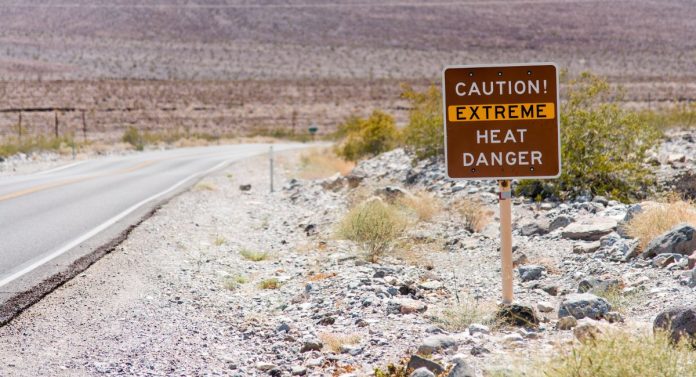As we enter the summer season it brings about a reminder that California’s climate, particularly its summers, are becoming increasingly hotter and drier. Californians will likely face interrelated challenges, like wildfires, wildfire smoke, heat, power outages and dangerous water conditions.
Many of California’s most at-risk populations will be impacted by these conditions. Ethnic Media Services and California Black Media will continue to keep California’s most vulnerable populations informed through an ongoing series of statewide ethnic media briefings in partnership with Listos California, a program of the Governor’s Office of Emergency Services (Cal OES).
Diana Crofts-Pelayo, Assistant Director, Crisis Communication & Public Affairs, Cal OES said wildfires, energy issues and water security are all interconnected risks in extreme heat. In the next few days, there will be a high temperature of more than 100 degrees. People have lost their lives during this time, so do what you can to stay indoors and stay cool. Pelayo said the state government is fully prepared, coordinating with state and federal partners, and working with local governments and community organizations to ensure the necessary resources are in place to stay safe.
She reminded citizens to take precautions and prepare for emergencies before disasters strike. First, register for alerts on your local county alert system. Available at Calalerts.org
Brayden Murdock, Meteorologist, National Weather Service said that this weekend, many parts of California will experience typical summer heat, especially the Central Tri-Valleys and Southern California, which will see high temperatures exceeding 100 degrees Fahrenheit. This is the first time on record that California has experienced widespread extreme heat.
“California hasn’t seen a lot of record high temperatures this year, but until the end of summer, for example, into August or even September, you will see a change in temperature”. Murdoch said some populated areas of California had low clouds and very many overcast days in the summer. Not only will there be warmer daytime temperatures, but rather warm nights.
Because of the large amount of snow in the Sierra this past winter, with the arrival of high temperature heat, the snow melt increased, causing the water level of the river to rise. “Not only do we have to deal with the heat, we may have some localized flooding as a result of that.”
Alf LaMont, of LaMont Digital, presented a package of “Summer of Safety” graphics providing tips on keeping people ready for and safe during potential summer emergencies: wildfires, flooding, power outages and high temperatures. They’re printed in English, Spanish and more than a dozen other languages, and available at listoscalifornia.org.
Jacqueline Nushi, of Project Camp’s emergency preparedness center, manages pop-up camps for kids during disasters, providing support and a safe environment for families. She said a key lesson she and other emergency managers learned was the value of empowering children with knowledge and coping skills — “a great way to build mindfulness and preparedness.”
Tips for Summer Safety
Crofts-Pelayo cited five keys for people to focus on for summer safety:
Get alerts: calalerts.org
Make a plan: “Have that conversation with your family to ensure that your little ones, your older ones, all know what they would do during an emergency. What emergency routes they would take, where to meet if separated.”
Pack a “go bag” in case you need to leave your home very quickly: important documents, medication, food, water, for instance.
Similarly, make a “stay box” in case you need to stay home. “It doesn’t have to be cost-prohibitive,” she said. “Think about it ahead of time and put everything together that would be necessary.”
And finally, Crofts-Pelayo said, “help others. This is a community movement.” She suggested sharing only official resources, but doing so via familiar networking channels: phone calls, social media posts and emails.
Vidya Sethuraman
India Post News Service







